Truro, Cornwall, England, UK 作者: 来源: 发布时间:2021-07-27
I. Population and Area
Continent: Europe
Country: The U.K
State/Province: England
City/Town: Truro, Cornwall
Total Area: 26.3 (sq mi)
Population in 2011: 18.8 (thousand)
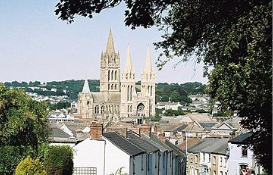
II. Natural Geography (environment and resources)
Terrain
Truro lies in the centre of western Cornwall, about 9 miles (14 kilometres) from the south coast, at the confluence of the rivers Kenwyn and Allen, which combine as the Truro River – one of a series of creeks, rivers and drowned valleys leading into the River Fal and then to the large natural harbour of Carrick Roads. The valleys form a steep-sided bowl surrounding the city on the north, east and west, open to the Truro River in the south. The bowl shape, along with high precipitation that swells the rivers and a spring tide in the River Fal, were major factors in the 1988 floods that seriously damaged the city centre. Since then, flood defences have been constructed, including an emergency dam at New Mill on the River Kenwyn and a tidal barrier on the Truro River.
Climate
The Truro area has an oceanic climate similar to the rest of Cornwall's. This means even fewer extremes in temperature than in the remainder of England, marked by high rainfall, cool summers and mild winters with infrequent frosts.
Roads and bus services
Truro is 6 miles (9.7 km) from the A30 trunk road, to which it is linked by the A39 from Falmouth and Penryn. Also passing through is the A390 between Redruth to the west and Liskeard to the east, where it joins the A38 for Plymouth, Exeter and the M5 motorway. Truro as the most southerly city in the United Kingdom is just under 232 miles (373 km) west-south-west of Charing Cross, London. The city and its surroundings have extensive bus services, mostly operated by First Kernow and Transport for Cornwall. Most terminate at Truro bus station near Lemon Quay. A permanent Park and Ride scheme, known as Park for Truro, which began operation in August 2008. Buses based at Langarth Park in Threemilestone carry commuters into the city via Truro College, the Royal Cornwall Hospital Treliske, County Hall, Truro railway station, the Royal Cornwall Museum and Victoria Square, and through to a second car park on the east side of Truro. Truro also has Longer-distance bus services run by National Express.
Railways
Truro railway station, about 1 km (0.6 mi) from the city centre, is on the Cornish Main Line with direct connections to London Paddington and to the Midlands, North and Scotland. North-east of the station is a 28-metre-high (92-foot) stone viaduct with views over the city, cathedral, and Truro River in the distance. The viaduct – the longest on the line – replaced Isambard Kingdom Brunel's wooden Carvedras Viaduct in 1904. Connecting to the main line at Truro station is the Maritime Line to Falmouth in the south. Truro's first railway station was at Highertown. It was opened in 1852 by the West Cornwall Railway for trains to Redruth and Penzance, and was known as Truro Road Station. It was extended to the Truro River at Newham in 1855, but closed, so that Newham served as the terminus. When the Cornwall Railway connected the line to Plymouth, their trains ran to the present station above the city centre.
Air and river transport
Newquay, Cornwall's main airport, is 12 mi (19 km) north of Truro. It was thought in 2017 to be the "fastest growing airport" in the UK. It has regular flights to London Heathrow and other airports, and to the Isles of Scilly, Dublin and Düsseldorf, Germany.
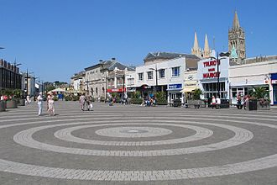
III. Economy
In 2009 total GDP in Cornwall stood at 9.5bn. GDP is the market value of all final goods and services produced within a geographical area within a given period of time. In relation to each person employed, GDP is 17,600 per annum per capita. This per capita figure is 72% of the EU average (and 65% of the UK average).
From 1999 up to 2003 the GDP per capita figure increased as a percentage of the EU average and then plateaued until 2006. Since then the figure has been in decline.
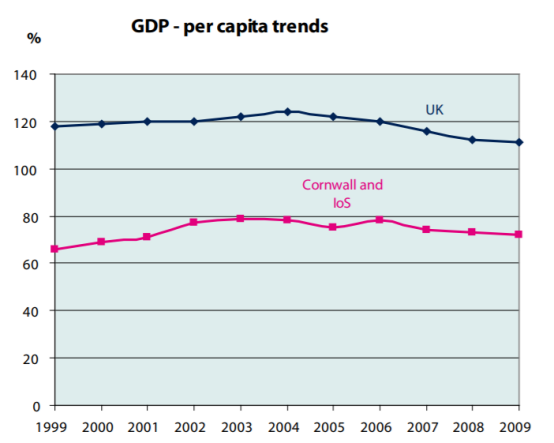
Now Cornwall’s total Gross Value Added (GVA) stood at £7.5bn in 2011. GVA is the value of the goods or services as they leave a sector or area, minus the cost of inputs used to produce them. GVA on a per capita basis is £13,848: lower than the UK £20,873 (2011). In 2011 Cornwall stood at 66.3% of the UK average. This is the second lowest figure for all NUTS 2 regions in the UK (with West Wales and the Valleys being lower at 65%).
Reference Website:
https://www.cornwall.gov.uk/media/3624007/Economy-and-Culture-Strategy-Evidence-Base.pdf
IV. Industrial Characterisitics
Major industries:
Trurois a cathedral city and civil parish in Cornwall, England, UK. It is Cornwall's county town and only city, as well as being its centre for administration, leisure and retail. Its population was recorded as 18,766 in the 2011 census. People from Truro are known as Truronians.Truro grew as a centre of trade from its port and then as a stannary town for the tin-mining industry.
Being the far-flung western corner of the British Isles, Cornwall's isolation from the rest of the country has long been a mixed blessing and its industrial heritage is no exception. No history of mass manufacture here, and only since the arrival of the Internet and distance working have some of the country's intellectual stock brought their work down in earnest. Cornwall's industry has always stemmed from its natural environment, be that the wealth of the land, either in terms of crops or mineral lodes, or the sea. As such it has inevitably always been vulnerable to the peaks and troughs that such industries experience. Even today, as tourism firmly takes the helm of Cornish income, it is the coastline and the mild climate which draw the people and, therefore, the money.
Major projects and related introductions:
1. Willow Green
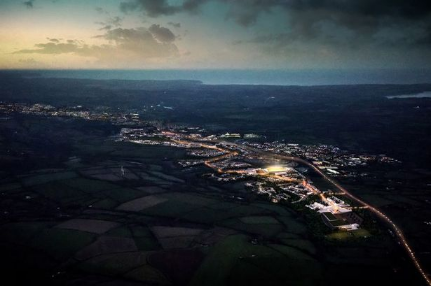
The 49-acre site at Willow Green, next to the A390 at Threemilestone, has been sold with outline planning permission for a development which would include hundreds of homes, a nursing home, supermarket, primary school and a community hall.
2. Revamped theatre and creative business hub
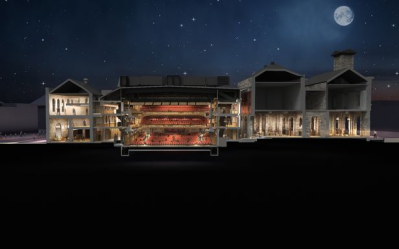
The Hall For Cornwall (HfC) will be completely revamped to open up the auditorium with more seating, making it more in line with the Theatre Royal in Plymouth as part of a £20m two-year project to transform the Truro venue.
Reference Website:
https://www.cornwalllive.com/news/cornwall-news/33-massive-projects-transforming-cornwall-1824055
https://www.cornwalls.co.uk/history/industrial
V. Attractions
1. Truro Cathedral:
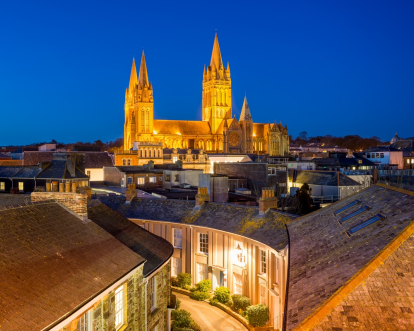
Possibly the loveliest Gothic Revival church in the country, Truro Cathedral was designed by John Loughborough Pearson who is credited for reintroducing the Medieval art of vaulting in the 19th century. Made with granite, limestone and quartz-porphyry, the Truro Cathedral was completed in 1910 and is one of only three cathedrals in the country to have three spires.
2. Royal Cornwall Museum:
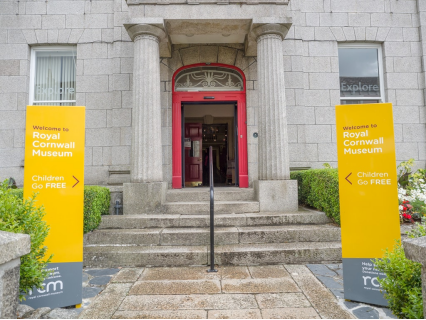
The ultimate resource for Cornish life and culture, this museum stems from the Royal institution of Cornwall, which was founded in 1818. Since 1919 the Royal Cornwall Museum’s home has been the former Truro Savings Bank (1845) and the Truro Baptist Chapel (1848), a pair imposing granite-clad Neoclassical buildings.
3. Trelissick:
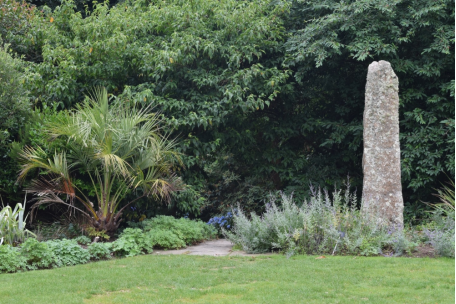
Set where the River Fal opens onto Carrick Roads, Trelissick is a charming country estate managed by the National Trust. With inspiring maritime views, the gardens have exotic plants like ginger lilies, azaleas, rhododendron bushes, bananas and dahlias, as well as an orchard preserving local apple varieties.
Reference Website:
https://www.thecrazytourist.com/15-best-things-to-do-in-truro-cornwall-england/
VI. History
The earliest records and archaeological finds of a permanent settlement in the Truro area date from Norman times. A castle was built there in the 12th century by Richard de Luci, Chief Justice of England in the reign of Henry II, who for his services to the court was granted land in Cornwall, including the area surrounding the confluence of the two rivers. The town grew in the shadow of the castle and was awarded borough status to further economic activity. The castle has long since disappeared.
Richard de Lucy fought in Cornwall under Count Alan of Brittany after leaving Falaise late in 1138. The small adulterine castle at Truro, Cornwall (originally the parish of Kenwyn), later known as "Castellum de Guelon" was probably built by him in 1139–1140. He styled himself "Richard de Lucy, de Trivereu". The castle later passed to Reginald FitzRoy (also known as Reginald de Dunstanville), an illegitimate son of Henry I, when he was invested by King Stephen as the first Earl of Cornwall. Reginald married Mabel FitzRichard, daughter of William FitzRichard, a substantial landholder in Cornwall. The 75-foot (23 m)-diameter castle was in ruins by 1270 and the motte was levelled in 1840. Today Truro Crown Court stands on the site. In a charter of about 1170, Reginald FitzRoy confirmed to the burgesses of Truro the privileges granted by Richard de Lucy. Richard held ten knights' fees in Cornwall prior to 1135 and at his death the county still accounted for a third of his considerable total holding.
By the start of the 14th century Truro was an important port, due to its inland location away from invaders, prosperity from the fishing industry, and a new role as one of Cornwall's stannary towns for assaying and stamping tin and copper from Cornish mines. The Black Death brought a trade recession and an exodus of the population that left the town in a very neglected state. Trade gradually returned and the town regained prosperity in the Tudor period. Local government was awarded in 1589 by a new charter granted by Elizabeth I, giving Truro an elected mayor and control over the port of Falmouth.
During the Civil War in the 17th century, Truro raised a sizeable force to fight for the king and a royalist mint was set up. Defeat by the Parliamentary troops came after the Battle of Naseby in 1646, when the victorious Parliamentarian general Fairfax led his army south-west to relieve Taunton and capture the Royalist-held West Country. The Royalist forces surrendered at Truro while leading Royalist commanders, including Lord Hopton, the Prince of Wales, Sir Edward Hyde, and Lord Capell, fled to Jersey from Falmouth.The mint was moved to Exeter.
Later in the century, Falmouth was awarded its own charter, giving it rights to its harbour and starting a long rivalry between the two towns. The dispute was settled in 1709 with control of the River Fal divided between them. The arms of the city of Truro are "Gules the base wavy of six Argent and Azure, thereon an ancient ship of three masts under sail, on each topmast a banner of St George, on the waves in base two fishes of the second."
Truro prospered in the 18th and 19th centuries. Industry flourished through improved mining methods and higher prices for tin, and the town attracted wealthy mine owners. Elegant Georgian and Victorian townhouses were built, such as those seen today in Lemon Street, named after the mining magnate and local MP Sir William Lemon. Truro became the centre for society in the county, even dubbed "the London of Cornwall"
VII. Culture
Attractions
Truro's dominant feature is the Gothic-revival Truro Cathedral, designed by architect John Loughborough Pearson, rising 249 ft (76 m) above the city at its highest spire. It took from 1880 to 1910 to build, on the site of the old St Mary's Church, consecrated over 600 years earlier. Enthusiasts of Georgian architecture are well catered for in the city, with terraces and townhouses along Walsingham Place and Lemon Street often said to be "the finest examples of Georgian architecture west of the city of Bath".
Events
Lemon Quay is the year-round centre of most festivities in Truro. In April, Truro prepares to partake in the Britain in Bloom competition, with floral displays and hanging baskets dotted around the city throughout the summer. A "continental market" comes to Truro in the holiday-making season, featuring food and craft stalls from France, Spain, Italy, Germany, Belgium, the Netherlands, Greece and elsewhere. Cornwall Pride, a Pride event that celebrates diversity and the LGBT community, takes place on the last Saturday of August. The Truro City Carnival, held every September over a weekend, includes various arts and music performances, children's activities, a fireworks display, food and drinks fairs, a circus, and a parade. A half-marathon organised by Truro Running Club also occurs in September, running from the city centre into the country towards Kea, returning to finish at Lemon Quay.
Sports
Truro temporarily became home to the Cornish Pirates rugby union club for the 2005–2006 season, but the team moved again for the 2006–2007 season to share the ground of Camborne RFC. In April 2018, the construction of a Stadium for Cornwall was under discussion with Cornwall Council, which had pledged £3 million in funding for the £14.3 million project. It is planned for a site in Threemilestone. The town has an amateur rugby union side, Truro RFC, founded in 1885. It belongs to Tribute Western Counties West and plays home games at St Clements Hill. It has hosted the CRFU Cornwall Cup several times.
Media
Truro is the centre of Cornwall's local media. The countywide weeklies, the Cornish Guardian and The West Briton, are based in the city, the latter serving the Truro area with its Truro and Mid-Cornwall edition. The city also houses the broadcasting studios of BBC Radio Cornwall, and those of the West district of ITV Westcountry, whose main studio is now in Bristol after a merger with ITV West. This closed the studio in Plymouth and the Westcountry Live programme was replaced by The West Country Tonight.
Customs
A mummers play text attributed until recently to Mylor, Cornwall (much quoted in early studies of folk plays, such as The Mummers Play by R. J. E. Tiddy – published posthumously in 1923 – and The English Folk-Play (1933) by E. K. Chambers), has now been shown, by genealogical and other research, to have originated in Truro around 1780.
VIII. Other information
Truro City Council, a city/parish council, is based upstairs at the Municipal Buildings in Boscawen Street. It runs parks, gardens and planting, mayoral and civic events, support of its overseas twinning, and tourist information. It also considers planning issues and is involved in creating the Truro and Kenwyn Neighbourhood Plan in association with Cornwall Council. The city divides into four wards: Boscawen, Moresk, Tregolls and Trehaverne, with 24 councillors elected for four-year terms. Cornwall Council (a unitary authority) has its base at Lys Kernow (formerly County Hall) west of the city centre. It administers planning, infrastructure, development and environmental issues.
The elected City Council forms Truro's lowest level of government, as one of 213 parish bodies in the county. The governance layer above is the unitary Cornwall Council, directly under central government. It covers Truro's public library, parks and gardens, tourist information centre, allotments and cemeteries. It is affiliated to Truro Chamber of Commerce and other civic bodies.
Truro's borough court was first granted in 1153; it became a free borough in 1589, then a city in 1877, receiving letters patent after the Anglican diocese was located there in 1876. However, it forms the eighth smallest in the UK in terms of population, city council area and urban area.
IX. Contact information
Mayor/Officer: Bert Biscoe
Tel: 01872 274766
Mail: info@truro.gov.uk
Reference Website:
http://www.truro.gov.uk/Contact_Us_6560.aspx
https://www.cornwalllive.com/news/cornwall-news/truros-new-mayor-citys-covid-4125789
